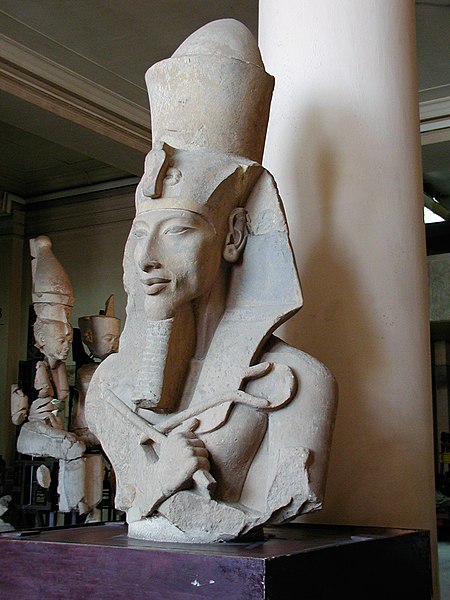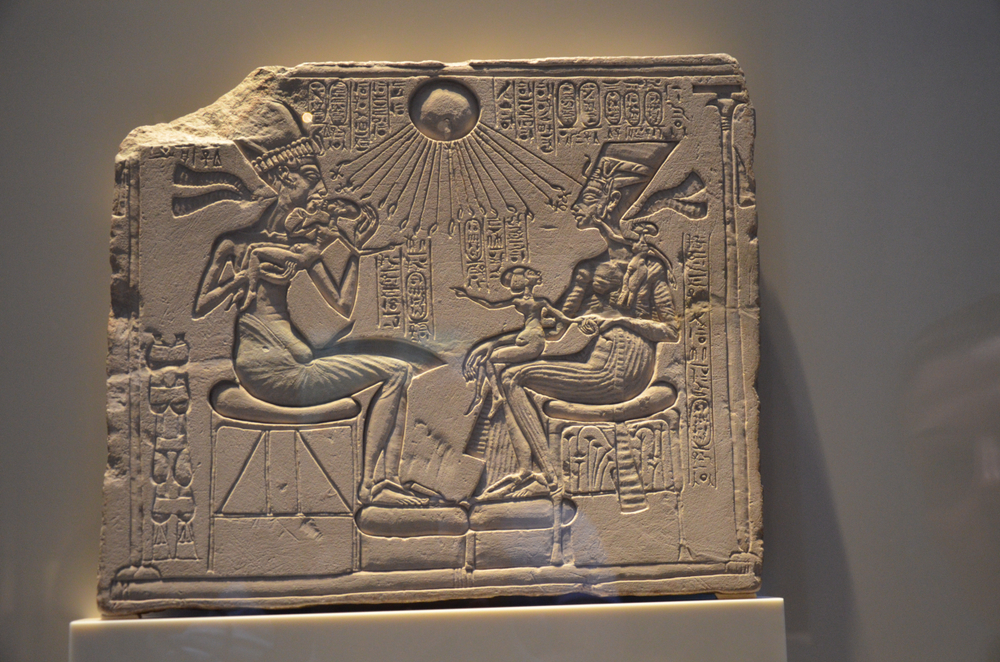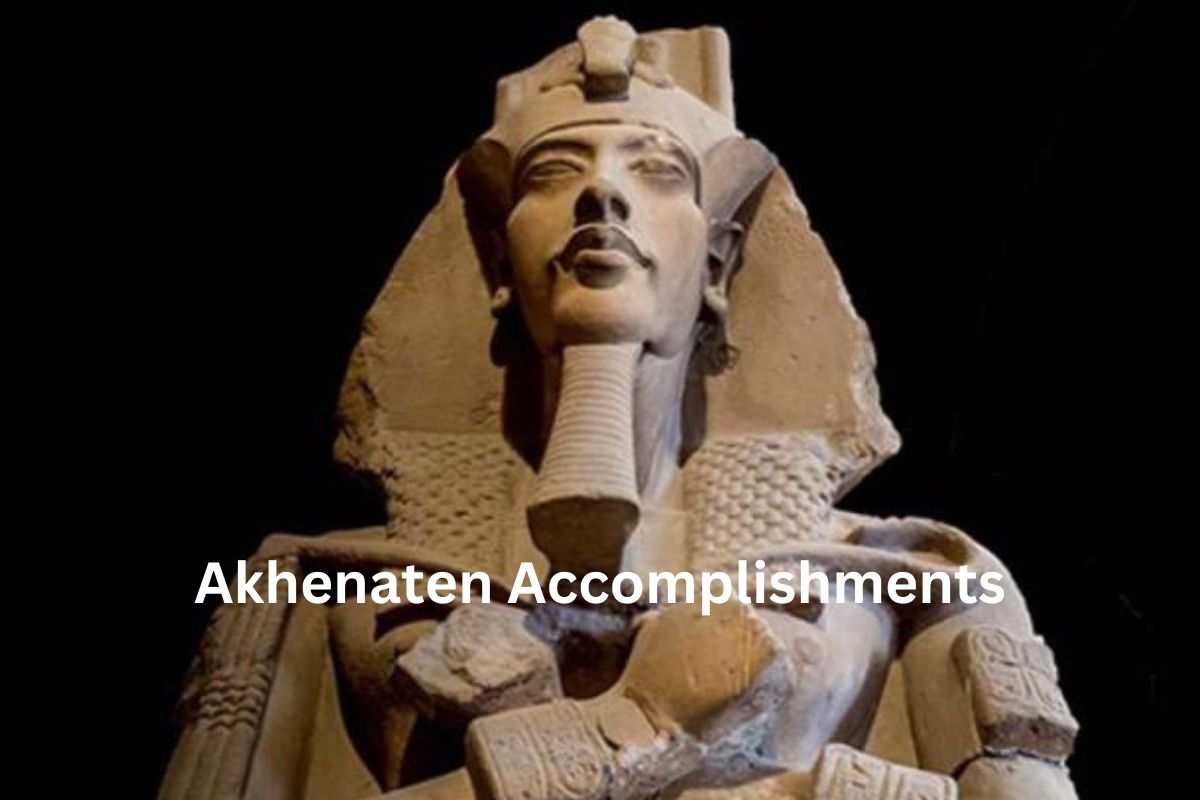Akhenaten, also known as Amenhotep IV, was an ancient Egyptian pharaoh who ruled during the 18th dynasty of the New Kingdom period. He ascended to the throne around 1353 BC and reigned for approximately 17 years.
He is primarily remembered for his religious reforms, which introduced a monotheistic worship centered around the sun god Aten. He established a new capital city called Akhetaten (Amarna) dedicated to the worship of Aten and implemented radical changes in Egyptian art, promoting a more naturalistic style known as the Amarna style.
Akhenaten elevated the status of his wife, Nefertiti, and presented her as a co-ruler. His reign had a significant impact on Egyptian art, religion, and culture, though his reforms were eventually reversed by his successors.
Despite this, Akhenaten remains a subject of fascination and study, contributing to our understanding of ancient Egyptian history and civilization.
Accomplishments of Akhenaten
1. Introduced a monotheistic religious system centered around the worship of Aten
Akhenaten initiated a significant religious reform in ancient Egypt by promoting the worship of Aten as the supreme deity.
Also Read: Facts About Akhenaten
He emphasized Aten’s role as the sun god and declared him the sole god of Egypt. This departure from the traditional polytheistic Egyptian religion marked a significant shift in religious practices and beliefs.

2. Established a new capital city called Akhetaten (Amarna) dedicated to the worship of Aten
To solidify his religious reforms, Akhenaten founded a new capital city called Akhetaten, which means “Horizon of the Aten.” This city was dedicated exclusively to the worship of Aten and served as the center of his religious and administrative activities.
Akhetaten’s design and layout reflected the pharaoh’s unique religious beliefs, with temples and structures focused on the veneration of Aten.
3. Promoted Aten as the supreme deity, banning the worship of other gods
Akhenaten not only elevated Aten to the status of the supreme deity but also actively discouraged the worship of other gods. He issued decrees to deface or destroy the names and images of other deities, thereby attempting to eradicate the traditional polytheistic practices in favor of Aten’s exclusive worship.
This strict monotheistic approach was unprecedented in ancient Egypt and marked a radical departure from the established religious norms of the time.
4. Revolutionized Egyptian art with the Amarna style, depicting a more naturalistic and intimate portrayal of himself and his family
Akhenaten’s reign witnessed a significant artistic revolution known as the Amarna style. This artistic style deviated from the conventional Egyptian artistic conventions, portraying the pharaoh, his family, and religious scenes with a more naturalistic and intimate approach.
Akhenaten’s statues and reliefs showcased distinctive physical features, such as elongated faces, slender bodies, and exaggerated features like prominent lips and elongated fingers.
The Amarna style reflected the pharaoh’s desire to break away from the rigid artistic traditions of the past and emphasize a more personal and individualistic expression.
5. Elevated the status of his wife, Nefertiti, and presented her as a co-ruler

Akhenaten’s reign witnessed a remarkable elevation in the status of his wife, Nefertiti. She played a prominent role in his religious and political affairs, and artistic representations portrayed her alongside Akhenaten as an equal partner and co-ruler.
Also Read: Accomplishments of Nefertiti
Nefertiti was depicted in a highly idealized manner, renowned for her beauty and influence. Their intimate depictions together showcased a unique bond between a pharaoh and his queen, showcasing a departure from the traditional portrayal of queens as secondary figures.
6. Composed the “Great Hymn to the Aten,” a poetic hymn praising the sun god
Akhenaten’s religious devotion to Aten found expression in the composition of the “Great Hymn to the Aten.” This poetic hymn celebrated the glory and power of Aten, exalting the sun god as the ultimate source of life and sustenance.
The hymn expressed Akhenaten’s deep reverence and belief in Aten’s benevolence and universal presence. It is considered a remarkable piece of ancient religious literature, providing insights into Akhenaten’s monotheistic beliefs and his poetic expression of devotion towards the god he regarded as the supreme deity.
7. Engaged in diplomatic relations with neighboring kingdoms
Akhenaten actively pursued diplomatic relations with neighboring kingdoms, including Mitanni and Assyria. Through diplomatic marriages and alliances, he aimed to strengthen Egypt’s political and economic ties with these kingdoms.
These alliances helped secure Egypt’s borders, maintain stability, and fostered cultural exchange between Egypt and its neighbors.
8. Commissioned various building projects, including temples dedicated to Aten and his own mortuary complex
Despite his religious focus, Akhenaten commissioned numerous building projects during his reign. He constructed grand temples dedicated to the worship of Aten in Akhetaten, the capital city he established.
These temples served as centers for religious rituals and offerings to Aten. Additionally, Akhenaten undertook the construction of his own mortuary complex at Amarna, ensuring a grand and lasting memorial for himself and his religious beliefs.

9. Influenced his successors, although they worked to restore traditional religious practices
While Akhenaten’s religious reforms were eventually reversed, his reign had a lasting impact on Egyptian history. His immediate successors, such as Tutankhamun and Horemheb, initially continued his religious practices but later worked to restore the traditional polytheistic Egyptian religion.
Nonetheless, Akhenaten’s reign served as a turning point in Egyptian history, prompting subsequent rulers to reconsider the role of the pharaoh and the power of the state religion.
10. Left a lasting historical impact on ancient Egyptian culture and remains a subject of interest and study
Akhenaten’s reign and his radical religious reforms have captivated the interest of historians, archaeologists, and scholars. His religious revolution, artistic innovations, and political decisions left a lasting mark on ancient Egyptian culture.
Akhenaten’s reign represents a unique period in Egyptian history, highlighting the complexities of religious beliefs, political power, and cultural transformation. The study of Akhenaten and his accomplishments contributes to our understanding of ancient Egypt and its societal developments.
